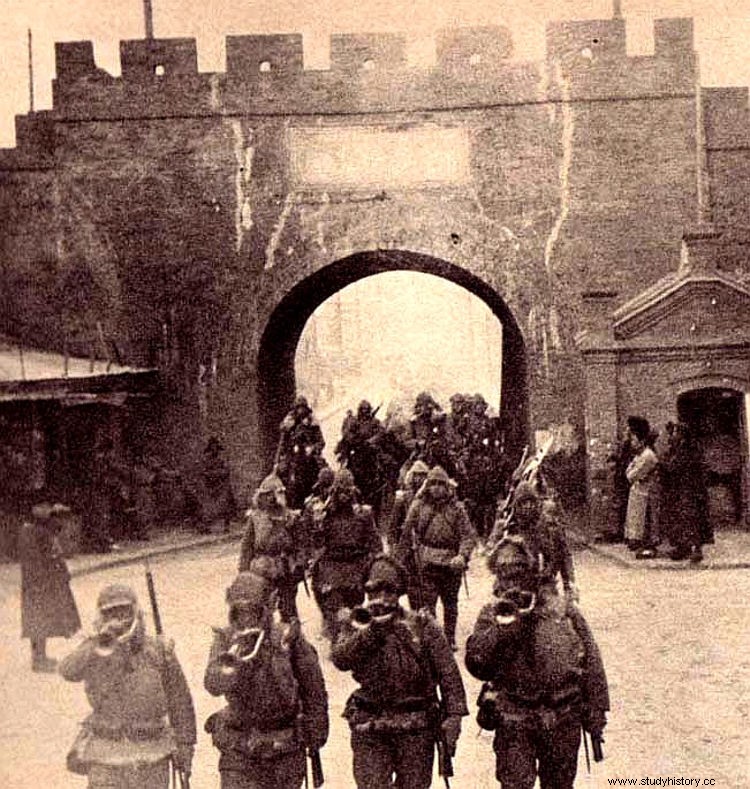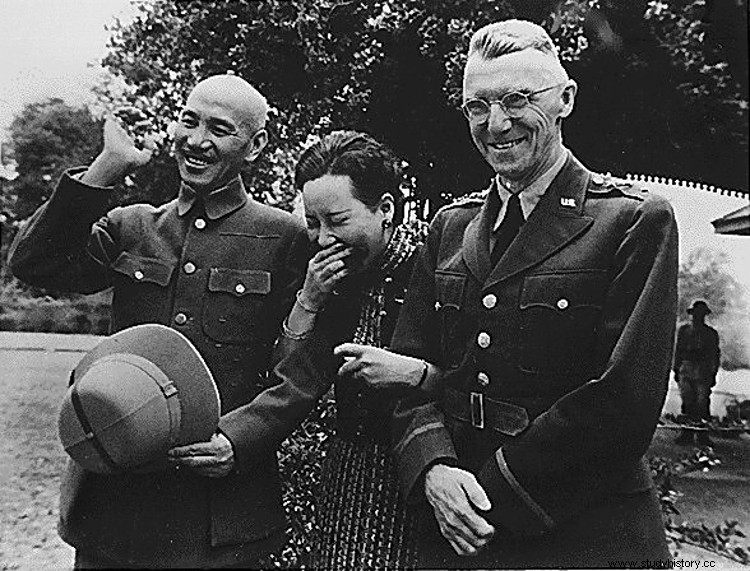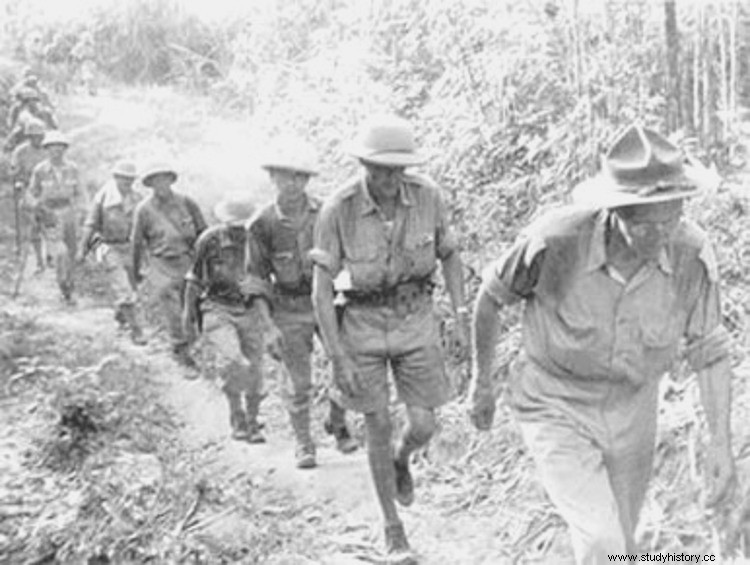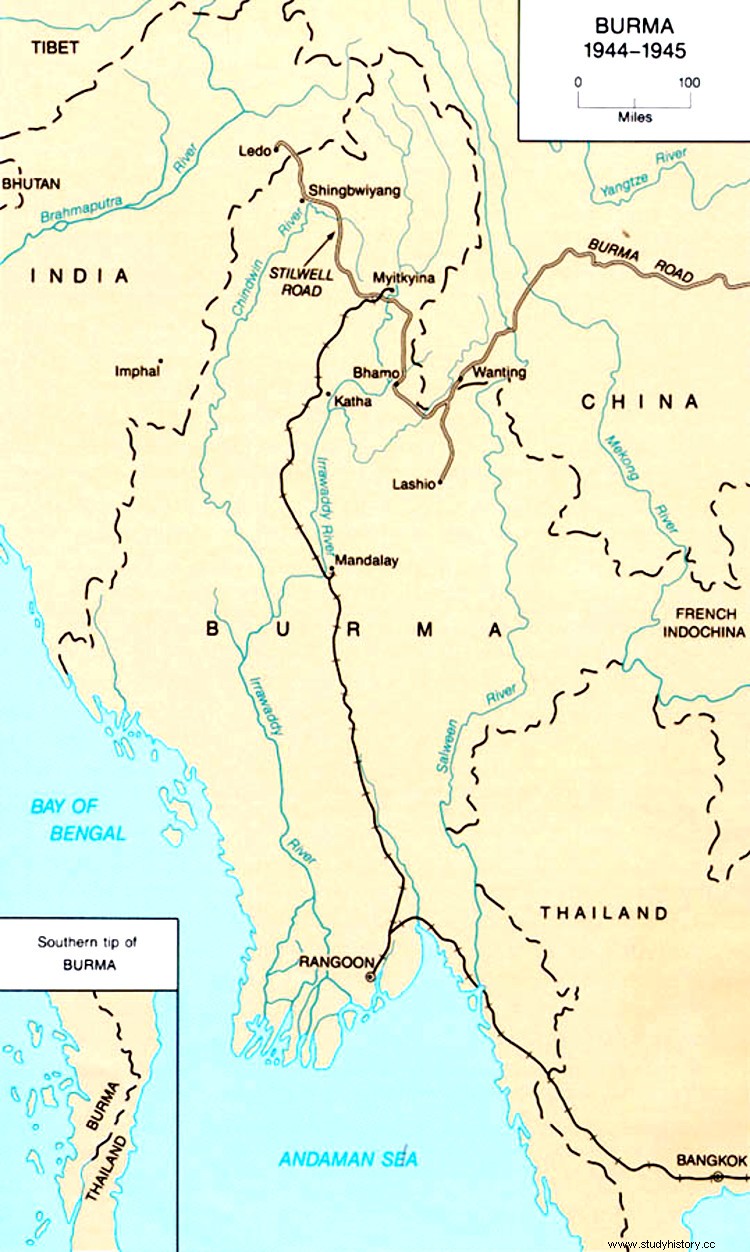"Politics makes strange bedfellows" . This well-known phrase that is usually attributed by system to Winston Churchill could also be applied to war; after all, Clausewitz said that "war is the continuation of politics by other means" and, indeed, there are historical cases that are quite strange. One of them was the peculiar evolution of China during the 1930s and World War II, going from collaborating with Germany to being enemies but without completely breaking their friendly ties, and then communists and nationalists confronting the Japanese invaders while killing each other. they. A mess; Let's see.
Some time ago we published here an article that explained the first with the title The alliance between Nazi Germany and China in the thirties . After the First World War, in which the Chinese did not participate but supported the Allies, the Weimar Republic renounced the German possessions in Asia and in 1921 signed a trade agreement with China by which it imported raw materials in exchange for weapons and Militar instruction. But in 1931, taking advantage of the endless civil war between the Communist Party and the Kuomintang, the Japanese Empire invaded Manchuria and turned the situation upside down.
In 1933 the Nazis won the elections and seized power. Hitler decided to continue the policy of his predecessors and continued to send material and advisers to organize a consistent Chinese army that would not only stop communism but also Japanese expansion, which was no longer limited to that puppet state ruled by Pu-yí, the last emperor, but it began to occupy the rest of the country. That Teutonic help made it possible to stop the Japanese at the Yellow River and gave the Chinese morale.

However, things were going to get messy. The fact that Japan maintained continuous confrontations with the Soviets was a strategic advantage that Berlin did not want to waste, so a diplomatic rapprochement with Tokyo began that crystallized in 1936 with the Anti-Comintern pact. What was really amazing was that, in parallel and for a couple of years, the good relationship with the nationalist government of Chiang Kai-shek was maintained. Then the war broke out and the German-Japanese pact became tripartite, with the incorporation of Italy.
The alliance system underwent a relocation, so that while the Germans were breaking ties with China, it became supported by the US and the USSR. The Japanese attack on Pearl Harbor broke the last remaining link and China declared war on Germany and Japan, thereby submerging its conflict with the latter into a larger one. Chinese participation in the war has never been highly valued, perhaps because it was limited to Asian territory, but the truth is that it mobilized the not insignificant figure of five million soldiers (forcing the Japanese to make an extraordinary effort) and recorded between fifteen and twenty million dead.
Communists and nationalists agreed to a truce and thus, the National Revolutionary Army dedicated itself to fighting the common enemy, which, moreover, considering the Chinese to be inferior, was committing authentic barbarities such as that of Nanjing. The colossal human potential of the country allowed a part of the troops, which was given the name of the Chinese Expeditionary Force, to be sent to Burma and India to help the allies, given the British limitations to attend to two fronts at the same time. (European and Asian, where their Burmese and Malay colonies had fallen and now India was threatened).

We have already seen here another case of an eastern expeditionary force, that of Siam. The Chinese, formed from the Fifth Army and the new Sixth Army, was led by Lieutenant General Joseph Stilwell, an American soldier who had taken the place left by the German advisers and whose relationship with Chiang-Kai-sek was not too good. :first, because Stilwell was not used to widespread corruption and accepted as normal among Chinese commanders; second, because many of those commanders refused to obey him without first consulting their president, which had a negative impact on effectiveness; and third, because the first clashes with the enemy in the winter/spring of 1942 were adverse.
Seeing the irrevocable fall of all of Burma, Stilwell ordered a retreat to India but, during the march, the Fifth Army suffered heavy losses between attacks and diseases, which sealed the failure of the expedition.
It was the summer of 1942 but the game was not considered lost and at the beginning of 1943 the troops began to reorganize, sending reinforcements by plane and receiving training from American instructors. This is how the X Force was formed, stationed in Ramgarh (current Indian state of Jharkand), in the northeast of the country.

They were a total of 75,000 men divided into five divisions:14th, 50th, 30th, 22nd, 38th, these last three newly formed. The 22nd, 14th and 50th came together to form the Sixth Army under the command of Liao Yaoxiang while the 30th and 38th formed the First, under the command of Sun Li-Jen, although the absolute direction remained in the hands of Stilwell. The objective was to force Japan to divert troops to contain them, neglecting other fronts, something that they more than fulfilled since in October of that year they faced and defeated the veteran Japanese 18th Division in Hukawng Valley.
The following year the Chinese openly entered northern Burmese territory and began harassing the Japanese, retaking Myitkyina, the capital of the Kachin region. This allowed the construction of the so-called Ledo Road to continue successfully. (later renamed Stillwell Road ), a road that linked Burma with China through India and guaranteed the shipment of supplies by alleviating the need to do so by airlift, as it had been since the fall of Rangoon. That road was 1,726 kilometers long, most of it on Burmese soil, now devoured by the jungle.

The part of the Chinese Expeditionary Force which was based in Yunnan (a southern Chinese province bordering Burma) and was known as Force Y, also advanced south taking Wanting and clearing the way to use the Ledo Road , inaugurated in February 1945. By then the course of the war was already fully decided for the Allied side and Southeast Asia was a minor scenario, after a last Japanese attempt to straighten the situation through a double offensive:the Operation Ichigo against US airfields in southern China and what they called Delhi Chalo (March towards Delhi) supported by the Indian National Army (anti-British independence fighters). Both failed.
The British 14th Army counterattacked in central Burma and swept the Japanese away, reconquering Rangoon on 2 May. Thus ended the mission of the Chinese, who returned to their country. They would not rest because they went from ending a world war to resuming the civil one, which in reality was only half asleep because those years had not been without internal clashes:for example, in 1941 the Fourth Army, made up of communists, was forced by Chiang Kai-shek to withdraw from the provinces of Anhui and Jiangsu, being exterminated during the march by the nationalists.
Both of them tried to occupy the positions abandoned by the Japanese, especially Manchuria, but the communists, organized in the People's Liberation Army, prevailed in what they called Liaoshen Campaign and the nationalists Battle of Liaohsi . It was the first of three offensives they launched against the Kuomintang (the others were the Huaihai and the Pingjin ), developed between September and November 1948. The First and Sixth armies that had made up the Expeditionary Force fought in this context and were crushed.
Then, an attempt at mediation by General Marshall fell on deaf ears in the face of mutual intransigence and the US sided with the Kuomintang, sending military aid based on war surpluses. However, the nationalists never managed to gain popular support and gradually disintegrated. But that's another story.
